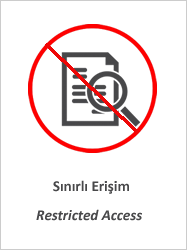Biaxial flexural strength and phase transformation characteristics of dental monolithic zirconia ceramics with different sintering durations: An in vitro study
Citation
Durkan, R., Gökay, G. D., Şimşek, H., & Yilmaz, B. (2021). Biaxial flexural strength and phase transformation characteristics of dental monolithic zirconia ceramics with different sintering durations: An in vitro study. The journal of prosthetic dentistry.Abstract
Statement of problem: Zirconia is a polymorphic metastable material which can react through a phase transformation from tetragonal to monoclinic when exposed to mechanical, physical, or chemical stimuli. Purpose: The purpose of this in vitro study was to investigate the fracture strength and phase structure of different high-translucency zirconia ceramics depending on the changes in sintering duration and thermocycling. Material and methods: Two monolithic zirconia ceramics, Katana (KAT) and NexxZr (NEX), were used to prepare disk-shaped specimens (n=66). The sintering temperature was 1500 °C, and 3 different sintering durations were tested: 1 hour, 2 hours (recommended by the manufacturer), and 3 hours. Thermocycling was applied to half the specimens. Fracture strength was calculated, and the specimens were analyzed with an X-ray diffractometer (XRD) to determine the level of the phase transformation. The normal distribution of the data was analyzed by using the Shapiro-Wilk test. Two-way ANOVA was used to compare multiple groups (α=.05). The Fisher least significant difference test was applied to identify significant differences in fracture strength. The paired-specimen t test was applied to perform intragroup comparisons. Results: Sintering duration significantly affected the fracture strength of KAT (P=.007). For nonthermocycled specimens, the fracture strength of NEX was significantly higher than that of KAT (P<.001). Thermocycling had a significant effect on fracture strength depending on sintering duration and zirconia ceramic interaction (P=.046). Conclusions: The sintering duration only affected the KAT zirconia, and the fracture strength of KAT decreased when sintered for 3 hours. Thermocycling decreased the fracture strength of both zirconias, except when the sintering duration was 2 hours for NEX. The fracture strength was higher for NEX than for KAT. Tetragonal-monoclinic phase transformation was not found for either zirconia according to the XRD analysis.
















